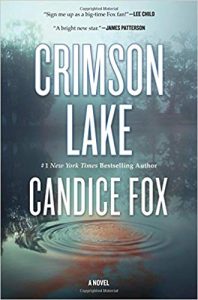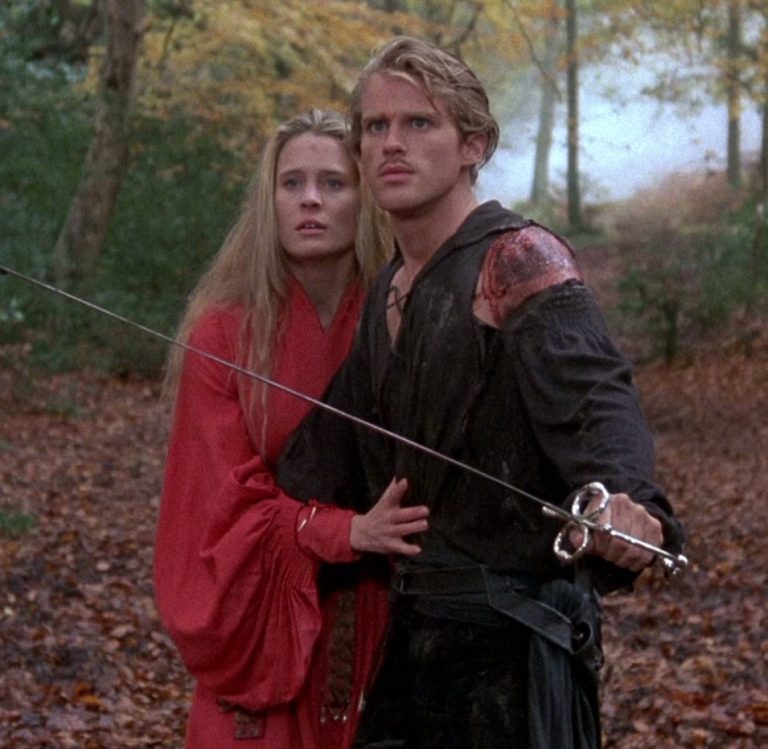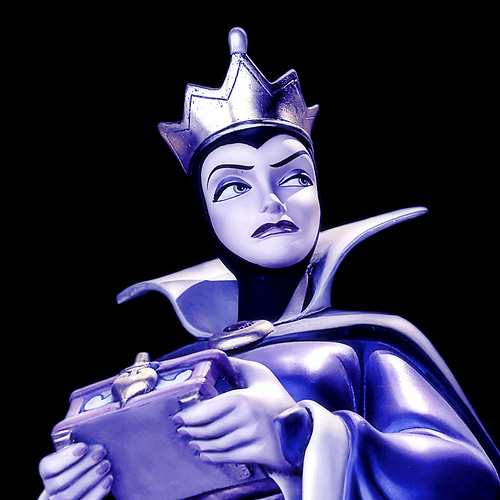Incidental Characters That Make Your Novel Zing
Minor characters are part of your cast of characters. They come “on stage” from time to time and serve specific purposes in the story. They don’t have huge, front and center roles, but they’re important to the overall plot.
The characters at NASA trying to get Mark Watney home from Mars in The Martian have bit parts, but without them, the story fails. Same with the crew of Watney’s ship, his pals who make the hard decision to turn around and go back for him, committing to many months’ delay in returning to Earth.
There are few moments with these minor characters, but if they were removed from the story, there would be no story to speak of. So, remember, they are only minor in the amount of stage time they have in the pages of your book. But they are not minor in value or purpose.
Incidental characters are in a different category. They can be removed from your story and it wouldn’t truly impact it. Their absence would not equate to novel failure. However, I will venture to say that sometimes it’s the incidental characters that add that special ingredient that makes a novel terrific and stand high above the mounds of other good novels.
It may perhaps be counterintuitive to say that incidental characters often have a big impacting role in a story, but I’d like you to pay close attention to this and consider how you might work incidental characters into your story.
Writers, and readers, often think of incidental characters as filler. Background noise. Characters you have to throw into the story to make it feel realistic.
“On the Nose” Writing Is Boring
I’ll venture to say that if a story has these kinds of characters in them, there is something wrong with the scenes. What this implies to me is the writer is presenting ordinary, “on the nose” scenarios that do not serve the best interests of the plot.
Showing characters in ordinary daily activities, such as eating in a restaurant or making small talk with coworkers, is not only boring to readers, it drags a story’s pacing and uses up valuable real estate in the story.
We’ll watch characters over two pages ordering food at a diner and chatting with the waitress, a situation both void of conflict or tension (which is a great indication that this is useless material) and that fails to advance the plot in any meaningful way.
We’ll read scenes in which a character is chatting with others about the weather, their jobs, their boyfriends, or some minor grievances, and those incidental characters say predictable things that realistically reflect normal life.
The protagonist runs into her neighbor as she walks down her driveway to her car. “How are you, John?” “Oh, I’m fine. My back is a little sore. Must have slept wrong in my bed.” “Oh, sorry to hear it.” “No worries. A little walking around and I’ll be good as new.” “That’s good.” “What are you up to today?” “Running errands. Got to visit my mom later. The kids are going to sleep over at Jill’s . . .”
And on it goes, with the reader’s head nodding and eyes drooping, until . . .
Real Life Distilled
You might protest by saying we have to have incidental characters in our stories or else they won’t appear realistic. Our lives are full of incidental characters—strangers and acquaintances we encounter here and there. So, yes, we want our stories to reflect real life.
But novels and short stories are distilled versions of life. They’re pared down to essentials. Dialogue should be distilled and pared down as well, which is why great dialogue is tight and eliminates the normal hemming and hawing and repetition real people lapse into.
If you go by the rule that every moment, every development, every character must contribute something essential to your story, you will avoid those boring and predictable scenarios.
So where do incidental characters fit into a tight story? At times just a brief mention is all that’s needed. Someone in a crowd yells something. A child is sitting on a curb crying. A familiar face at work makes an enigmatic comment about the boss’s mood. These singular moments with incidental characters can be terrific to infuse microtension into a scene, which means they create reader curiosity and add suspense and mystery to the situation.
But if an incidental character, such as a stranger on the street or a bellhop in a hotel is brought into a scene, it has to serve a specific purpose.
What purpose? Everything in a story must either advance the plot in some meaningful way or reveal something significant about character or both.
If a POV character, for example, stops a maid on the third floor of a hotel asking where to find room 312, and the maid points down the hall, that’s wasted space. It’s even worse if the character stops and chats with the maid for half a page about the weather. None of that is helpful to your story. It’s clutter.
All your character has to do is look on the wall to see where room 312 is.
Get in the habit of asking, “Is this important to my scene, helping build tension?” If you ask that question, you will probably take out the entire section of your character walking through the hotel to room 312.
If the important action starts after the character gets to the room or is in the room, start the scene there. Ditch the bellhop, the maid, the guests walking down the hallway to the elevator. Unless you can use an incidental character for a meaningful specific purpose, leave him out.
The premise, plot, and situations you invent in your storyline will call for a number of characters on stage. As previously mentioned, every moment of every scene has to serve the purpose of your premise. When you play out the plot, which centers on your protagonist pursuing a specific goal, there will be people helping or hindering your character, directly or indirectly, because the goal is what the story is all about.
After you’ve laid out your scene action and you have the main and minor characters in place, you’ll need to consider what, if any, incidental characters you need. Emphasis on need.
In the brilliant opening to Candace Fox’s Crimson Lake, her suicidal, despairing protagonist Ted Conkaffey rescues an injured goose from the croc-infested swamp outside the house he’s renting in nowhere Australia, a ramshackle place he’s holing up in to avoid being recognized.The scene sizzles with an undercurrent of pain, depression, and a host of other emotions, artfully, masterfully conveyed.
Ted is the only character in the entire scene except for one incidental character: a local vet Ted takes the goose to.
We never see this vet again in the story, yet this encounter in the novel’s first scene is crucial to setting up who Ted is and what he’s going through. There is a brief section of dialogue that could be construed as predictable, “on the nose” conversation. But great writers pack their dialogue with subtext and microtension and layers of meaning.
Dialogue in fiction is best when it serves more than one purpose (to convey information). In this exchange, information is conveyed. How much to fix a goose? A lot. We learn through that exchange that Ted doesn’t have much money. But what real purpose does this encounter with an incidental character serve? Let’s read the end of the scene.
I took out my wallet and flipped through the red and blue notes. “How much is it to fix a broken goose?”
“It’s a lot, Mr. Collins,” the vet said.
Seven hundred dollars later I drove home trembling and sick and the new owner of a family of domestic geese. It wasn’t the fact that I now had exactly fifty-nine dollars to my name that gave me the shakes. The vet had noticed the name on my credit card was Conkaffey, not Collins. It’s an unusual name. People don’t forget it. And it had only been a month since it was all over the national news. I’d watched his face harden. Watched the lines around his mouth deepen, and then his eyes begin to lift. I grabbed the box of birds and left before I could see the look on his face.
I was sick of that look.
Protagonist Ted Conkaffey is a police detective in Sydney, but because of being in the wrong place at the wrong time, he has been accused but not convicted of a brutal child abduction. He’s fled to the swampy croc-infested north to keep a low profile, but it’s hard to do when your face has been plastered all over the news for months and your life has been destroyed. Ted is trying to find a way to not just survive literally but emotionally. He’s lost his wife and baby girl, his career and reputation—everything.
Making your protagonist a victim of unfortunate circumstance is one the best ways to create an empathetic character, and I can’t think of many situations more unfortunate than this one.
 The vet serves a very important and specific purpose in this scene. He’s used as a catalyst. His behavior triggers a reaction in Ted, a strong emotion. Ted’s reaction reveals to us, the readers, something key to Ted’s character. And what is revealed is foundational to the premise of this novel. Ted is a vilified man, and no matter where he goes, he cannot escape the label of child rapist that has been wrongly slapped on him.
The vet serves a very important and specific purpose in this scene. He’s used as a catalyst. His behavior triggers a reaction in Ted, a strong emotion. Ted’s reaction reveals to us, the readers, something key to Ted’s character. And what is revealed is foundational to the premise of this novel. Ted is a vilified man, and no matter where he goes, he cannot escape the label of child rapist that has been wrongly slapped on him.
The vet himself is not important. We will never see him again in the story. He could have been left out. Or he could have been exchanged with an old woman at the market at the checkout counter, ringing up the cost of Ted’s groceries. Or he could have been exchanged with the kid at the minimart pumping gas into Ted’s car.
The exact type of character doesn’t matter at all. What matters is the purpose this character serves. And in this scene, the vet serves the purpose in revealing to the reader that Ted is living in emotional hell and there is no escape, not even in the remote swamps of northwestern Australia.
Here, then, is an important insight. Don’t populate your novel with incidental characters to create filler and make your world appear real. That’s a waste of time and pages. Instead, focus on what your scene must accomplish to reveal character and advance the plot. Part of advancing the plot includes complicating it. Incidental characters can add complications, delays, and misdirections.
Can you think of one moment in your story in which you need to reveal something important about your protagonist? Some secret, some fear, some hint at past pain or wound? Now come up with a list of maybe five possible incidental characters that can be used in that scene to bring out the key info you must reveal. It can be a character you never use again in your novel, or it can be one that has popped up briefly on an occasion or two.
Play around with various types of incidental characters and find places to use them in your story. They will add believability and richness to your novel!
Does your novel have a great incidental character? Or have your read a great scene in a novel that utilizes an incidental character for an important purpose? Share in the comments!
NEW! Announcing my new online course: Your Cast of Characters
Learn all about creating the perfect cast for your novel in this new online video course. The course launches MAY 1, 2020, but you can enroll now and get $50 OFF the regular price by using coupon code EARLYBIRD. Sign up HERE at my online school. Remember: you CANNOT access any of the modules until May 1. I’ll be sending you an email at that time to let you know the doors are open!
 Your characters are the heart of your story, so be ready to learn a lot of great tips. BONUS! Included in your course are interviews with best-selling authors, who discuss their process of how they come up with the best characters for their stories. You can’t find these videos anywhere else but in my new course.
Your characters are the heart of your story, so be ready to learn a lot of great tips. BONUS! Included in your course are interviews with best-selling authors, who discuss their process of how they come up with the best characters for their stories. You can’t find these videos anywhere else but in my new course.
And remember: you have lifetime access to all my courses at cslakin.teachable.com, and you also get a 30-day money-back guarantee, always. I want you to be happy with the content you are learning. So …. no risk! And check out all my other online courses while you’re at it. Thousands of writers have taken these courses around the world and sing their praises.
Here’s some of what you’ll learn in this extensive course:
- What the basic types of characters are and what roles they play in a story
- How your plot and premise inform the characters you develop
- How to determine if a character is essential to your plot or just “filler”
- What kind of supportive characters does your specific story need and how you can determine that
- How to create characters that act as symbols
- What archetypes are and how you can utilize them to create fantastic characters
- How incidental characters can make or break your story
- Why understanding character motivation is paramount
These video modules feature numerous excerpts from novels, movie clips, and deep instruction. In addition, you are given assignments to help you develop a great cast of characters which you can download and do over and over as needed. Be prepared to learn!












I have a few of those characters who are just there to serve a purpose. I have always liked how Robert Louis Stevenson’s incidental characters not only serve a purpose, but are memorable too, even if they only show up in the story once. I finished my premise sentence. It needs some work, and I was wondering if you have any suggestions on how I could cut it down.
When he is offered an opportunity by a smuggler, seventeen-year old Rob Riley decides to escape the tyranny of Ireland under the rule of King George III, but instead he is forced to serve aboard a British warship and must resist its captain’s attempts to enslave him while finding a way to stop him from tracking down an American ship that has been attacking the British Isles.
I have several variations of this, mostly due to the fact that I can’t decide what is the true inciting event. Thanks for your time.
When Seventeen-year old Rob Riley attempts to escape the tyranny of Ireland under the rule of King George III, he is forced to serve aboard a British warship, where he must try to stop the captain from tracking down an American ship that has been attacking the British Isles.
Thanks! That’s much clearer. I’ve been having a lot of trouble with it.
Thanks for a great post. I always enjoy your posts and often post the links on my blog. I will be doing so with this post. I particularly like the excellent examples you give. They really clarify your lessons.
Funnily enough, the vet pops up again in the next book, but this time it’s the replacement vet who plays a larger role. That series is terrific.
I was reminded of the Val McDermid crime novels. A writer friend won the opportunity to be named as a minor character in an earlier novel, and that character ends up becoming a major player in later novels, growing in each successive story. Lots of fun for all of us who know her!
Thanks for another useful post. I’ve tried to ensure that when incidental characters appear they have a purpose:
‘Figure-hugging, I think you mean,’ she (Jane) said, archly. She was wearing an ankle-length gown in a thin, clinging fabric, which shaded from midnight black at the neck and sleeves, through royal blue, to a gauzy transparency about her legs.
‘Aye.’
‘All right, it doesn’t so much hug the figure, as grab it with both hands and pant heavily, but I wanted to be a woman again. I’m fed up with everybody being nice to me because of Alan, I want to live a little.’
‘Well, if ye are ready—’
At that moment starline chimed. Auntie appeared and said, ‘A Julia Russell for Lieutenant Sinclair. Do you want to take the call?’
‘You’d better not take it in here, with me looking like this,’ said Jane, ‘she’ll think you’ve got another woman. Go on the flight deck, I can wait.’
‘Sure?’
‘Sure, go on.’
Sinclair returned, mystified, after five minutes. ‘I have no idea what that was all about. The lassie seemed to think she knew my brother, but my brother isn’t in Space Fleet.’
‘That’s odd. Sorry, I seem to have got an oily mark on my hand somehow, can I use your bathroom?’
Auntie is the artificial intelligence that runs Space Fleet. (Arcturian UNified Tactical Information Equipment.) Julia never reappears, but notice that Jane uses the word “Somehow”. This is a giveaway that something has gone wrong with her plan and she is bluffing like mad.
In fact she’s nobbled Sinclair’s spaceship so that he can’t take off the next morning, and can’t call for help. This enables her to win while being just inside the rules in the upcoming Fleet exercise:
‘Let me tell you the story in order,’ said Jane. ‘I knew Julia Russell in basic training, and we’ve kept in touch. She runs deep space plotting now, one of the unseen angels who feed data to Spence’s big board, thanks to her uncanny ability to fix almost anything that can go wrong with a computer. Basically I put her up to this.’
Julia has made the call to get Sinclair out of the way for a few crucial seconds while Jane does her nefariousness. After that she disappears from the plot completely.
Is this the right way to do it?
Hi Robert, it’s hard to give a definitive answer with a brief excerpt, but that’s the idea. We need incidental characters in scenes to be useful as tools to convey important info, create obstacles or insights, or bring theme to the forefront, among many other possible functions. The idea is to avoid boring or ordinary exhanges with incidental characters that don’t add anything significant to the story.